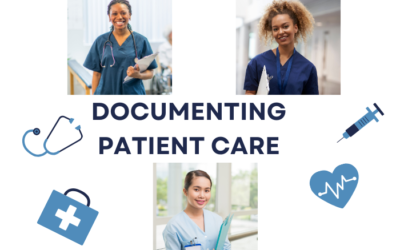When you talk to a patient, you share information with them, and they share information with you. Communication can happen in many ways, such as:
- Talking
- Writing
- Pictures
- Drawing
- Actions
Understanding the Patient’s Emotions
- Empathy: Try to understand how the patient feels. Showing that you care can help build trust and make the patient feel calmer.
- Non-Verbal Communication: Pay attention to the patient’s body language, facial expressions, and actions, especially if they can’t talk.
Encouraging Communication
- Ask Simple Questions: Use simple yes/no questions or short sentences to help the patient express themselves.
- Repeat Back: To make sure you understood, repeat what the patient said in your own words.
Handling Difficult Behavior
Sometimes, patients might act in a way that seems angry or upset. They might hit, bite, push, yell, scream, or kick. Patients might do this because:
- They feel frustrated.
- They don’t feel well.
- It’s just part of their personality.
Remember, it’s not usually about you. The patient is likely reacting to how they feel. But it’s important to write down what happened and tell your supervisor. The care team needs to know about this behavior because it might show that the patient’s health is changing.
How to Respond When a Patient is Upset
- Protect Yourself: If the patient tries to hit or kick, block the blows or move out of the way. Never hit back.
- Give Them Time: Let the patient calm down before you try to talk to them again.
- Keep Them Safe: Make sure the patient is in a safe place.
- Give Them Space: Let the patient have some room and don’t crowd them.
- Stay Calm: Speak in a calm, quiet voice.
- Be Patient: Take your time and be flexible with the patient.
- Stay Neutral: Don’t argue or get into a fight with the patient. Stay calm, even if they say something mean.
- Use Gentle Movements: Don’t make sudden gestures or movements that might scare the patient.
- Be Supportive: Reassure the patient that you are there to help.
- Think About the Cause: Try to figure out what might have made the patient upset.
- Report the Behavior: Always tell your supervisor about any bad behavior so they can help.
Dealing with Non-Responsive Patients
- Gentle Encouragement: Some patients might not respond at all. Keep talking gently and offering encouragement. Even if they don’t answer, they might still hear you and feel comforted by your presence.
- Use of Familiar Items: Show the patient familiar objects like photos or favorite items. This can help them feel more at ease and might help them open up.
Involving the Family
- Family Support: Encourage family members to be part of the communication process when possible. They can often help calm the patient or provide important information about what might upset or comfort them.
Where Can You Find More Information
- Communicating with patients
- Communication skills for home health aides
- Tips for speaking with a patient’s family





0 Comments